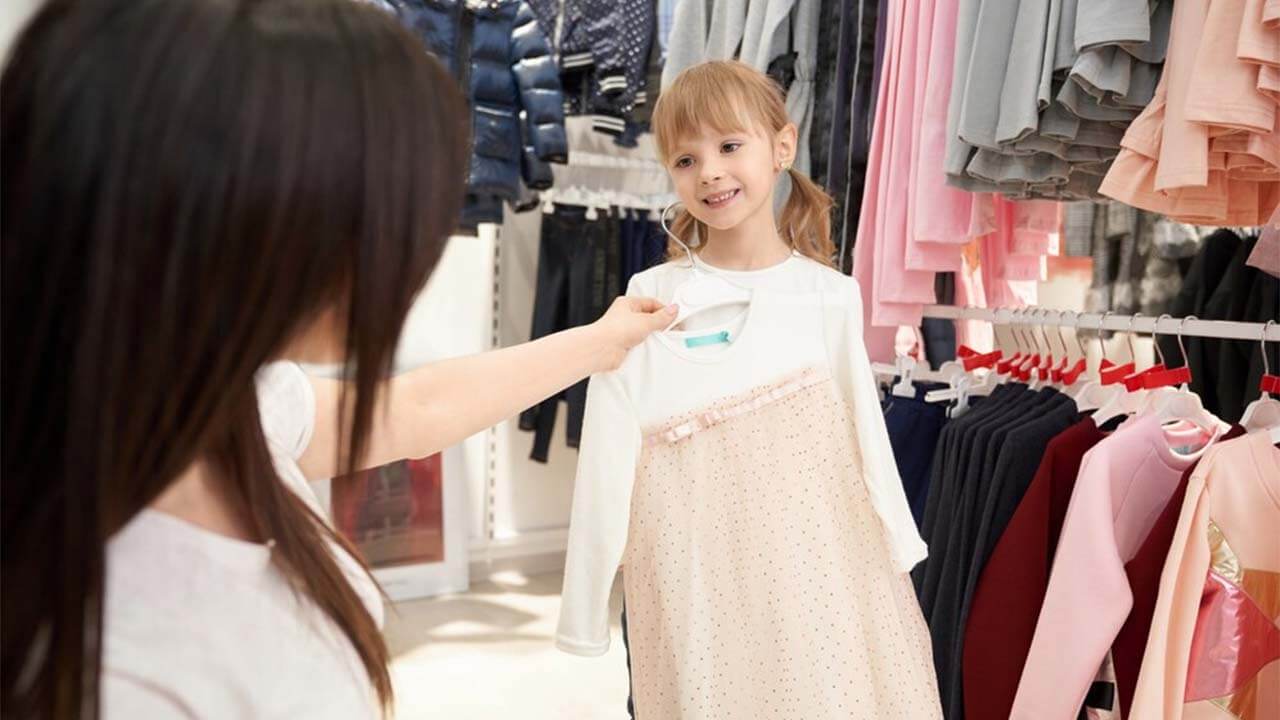Shopping for children’s clothes can feel like solving a puzzle especially when every brand uses slightly different measurements. If you’ve ever asked yourself, how do kids clothing sizes work, you’re not alone. Between age-based labels, height measurements, and sizing inconsistencies, it’s easy to end up with clothes that don’t quite fit.
In this guide, we’ll walk you through everything you need to know about children’s clothing sizes from baby onesies to teen trousers. Whether you’re shopping in-store or online, you’ll gain the confidence to pick the perfect size every time.
1. Understanding Kids’ Clothing Sizes by Age
Most kids’ clothes are labeled by age groups: newborn, 0–3 months, 3–6 months, 2–3 years, 4–5 years, and so on. But here’s the trick: these age labels are just guidelines, not guarantees. Every child grows differently, and growth spurts don’t care about labels!
| Size Label | Approximate Age | Average Height (cm) | Average Weight (kg) |
|---|---|---|---|
| Newborn | 0–1 month | Up to 56 cm | Up to 4.5 kgy |
| 0–3 Months | 1–3 months | 56–62 cm | 4.5–6.5 kg |
| 3–6 Months | 3–6 Months | 62–68 cm | 6–8 kg |
| 6–9 Months | 6–9 Months | 68–74 cm | 8–9 kg |
| 1–2 Years | 1–2 Years | 80–90 cm | 11–13 kg |
| 3–4 Years | 3–4 Years | 98–104 cm | 14–17 kg |
| 5–6 Years | 5–6 Years | 110–116 cm | 18–20 kg |
| 7–8 Years | 7–8 Years | 122–128 cm | 22–26 kg |
2. Toddler vs. Big Kid Sizes: What’s the Difference?
Once kids reach the toddler stage (12 months and up), clothes are often labeled with a “T” to indicate toddler sizing (e.g., 2T, 3T, 4T). These sizes focus on mobility, diaper access, and ease of dressing.
After age 4 or 5, sizing shifts to “big kid” sizes—typically labeled as 4, 5, 6, 7, and so on. These sizes are less about diaper convenience and more about style and function for school-age children.
Also, learn more about the Teaching Kids About Clothing Lifecycles
3. UK, US & EU Clothing Size Conversions for Kids
Shopping from international brands? Here’s how sizes compare across regions:
| UK Size | US Size | EU Size | Approx Age |
|---|---|---|---|
| 0–3 months | 0–3 months | 56–62 | 0–3 months |
| 6–9 months | 6–9 months | 68–74 | 6–9 months |
| 12–18 months | 12–18 months | 80–86 | 12–18 months |
| 2–3 years | 2T–3T | 92–98 | 2–3 years |
| 4–5 years | 4T–5 | 104–110 | 4–5 years |
| 6–7 years | 6–7 | 116–122 | 6–7 years |
| 8–9 years | 8–9 | 128–134 | 8–9 years |
4. Tips for Getting the Perfect Fit
Here’s how to make sure your kid’s clothes fit well and are comfortable:
1. Take Measurements
Use a soft measuring tape to check:
- Height (from head to toe)
- Chest (under the armpits)
- Waist (above the hips)
- Inseam (from the crotch to the ankle)
2. Read Reviews and Fit Notes
Other parents often share if an item runs big, small, or true to size.
3. Size Up When in Doubt
Kids grow fast. If you’re unsure between two sizes, the larger size gives more room to grow.
4. Consider Fabric and Stretch
Cotton shrinks slightly. Stretchy fabrics may offer more wear time.
5. What About Shoe Sizes for Kids?
Kids’ feet grow rapidly especially in the first few years. Shoe sizes can differ from clothing sizes and vary by brand. Here’s a quick reference:
| UK Shoe Size | Age Range (Approx.) |
|---|---|
| 0–3 | 0–12 months |
| 4–6 | 1–2 years |
| 7–9 | 2–4 years |
| 10–13 | 4–7 years |
| 1–3 | 7–10 years |
Conclusion: Simplify the Kids’ Clothing Size Game
Understanding how kids clothing sizes work can make shopping a whole lot easier and less stressful. While age is a starting point, focusing on your child’s actual measurements and growth patterns is the best way to find clothing that fits well and lasts longer. Keep a flexible mindset, consult sizing charts, and when in doubt, size up. Happy shopping, parent superheroes!







